With baseball season just getting underway here in the United States, it’s the perfect time to take a look at Ira Block’s beautiful and as-yet-unseen new project documenting baseball in Cuba. After several visits to the island to photograph baseball, Block was wrapping up this project last December when he realized something was missing and that the perfect way to cap the series was to make portraits of senior baseball players. Here he discusses his project, its origins, and how he made these captivating portraits to complete it.
Alpha Universe: You've been working on a project photographing baseball in Cuba for some years. how did this project get started?
Ira Block: My first trip to Cuba was in 1997 for the National Geographic, so I’ve been there a long time ago when things were a lot different, and I’ve made many trips to Cuba. I’ve always been fascinated by the Cuban culture, especially since in the late 1980s I spent a lot of time in the Soviet Union and Eastern Europe doing stories, so I always had this idea of what communism was like. And then my first trip to Cuba, I got there and I said ‘wow, this is not like the communism I know.’ The people seemed happier, the body language seemed more open, the weather was much nicer. That fascinated me about the Cuban people. There was a time period of about ten years when I didn’t go to Cuba, and then I started going back to Cuba again in 2012. At that point, I had become a pretty interested baseball fan in the U.S. I liked the game, I liked the psychology of the game, the nuances of the game—which if you’re not a fan you don’t really understand. You think it’s a slow boring game.
Alpha Universe: Was that fandom new for you, or had it always been there?
Ira Block: I had always liked baseball a bit since growing up as a kid. But somehow I became more interested in it. And I was in Cuba in 2013, and I recognized that baseball was really not just a sport there but an integral part of the Cuban culture. And I did a little bit of research into it, and I read that they’ve been playing baseball there almost as long as we’ve been playing in the United States. And I thought ‘wow, this is amazing for everything Cuba’s been through, baseball’s been there.’ As a matter of fact, in the 1890s when they were trying to get their independence from Spain, Spain wanted them to make bullfighting their national sport, and the Cubans said no, we’re going to make it baseball. So that’s how far back it goes. And I came up with this idea to do a project on baseball and the Cuban culture, and I wasn’t just looking at pro baseball or anything, I wanted to see grass roots baseball.
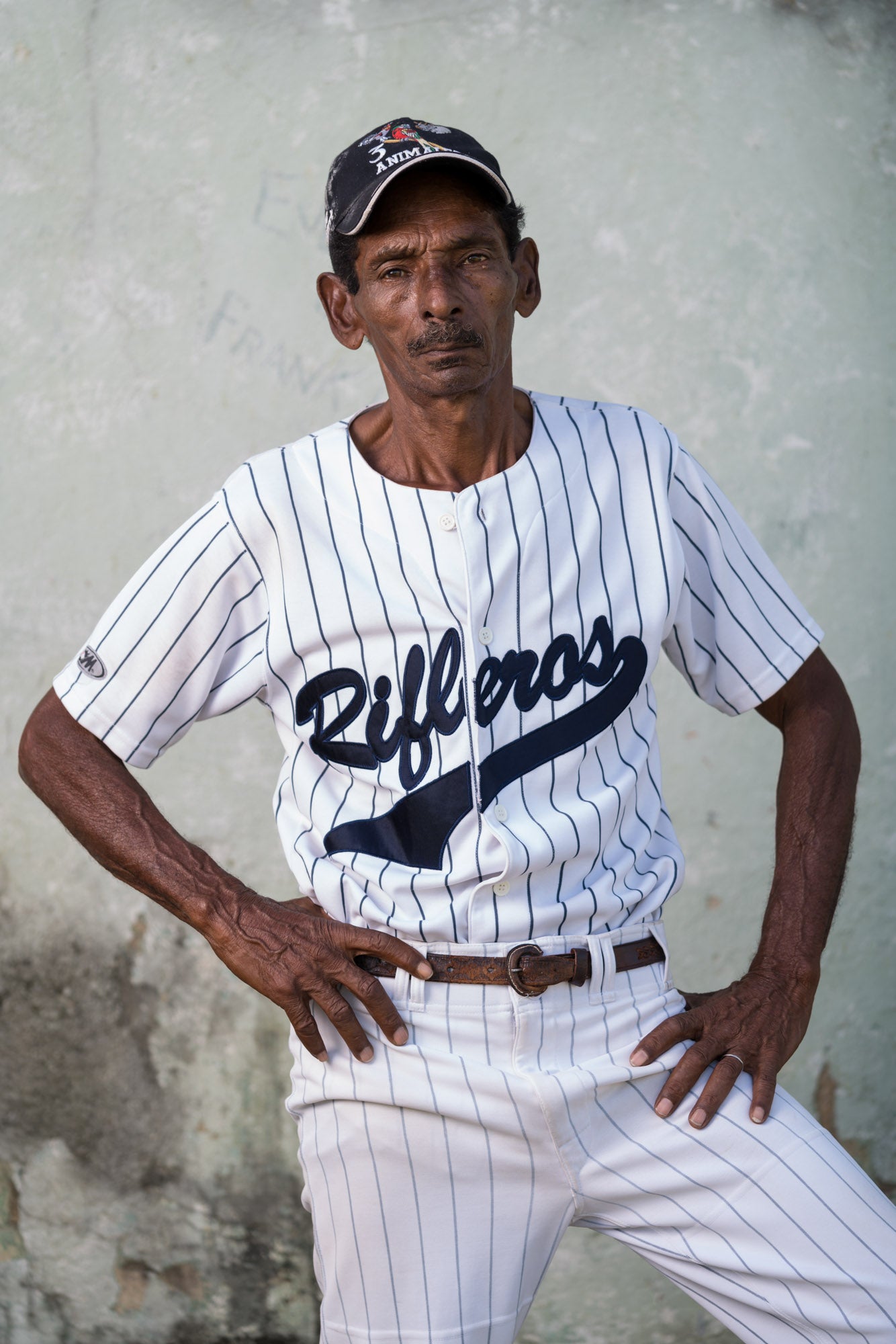
Alpha Universe: Were you looking to explore why it is integral to the culture, or just how?
Ira Block: I wanted to explore how. The ‘why’ was pretty simple: that was the sport that they got involved in back in the late 1800s and baseball is a fairly inexpensive sport. I’ve seen kids playing with tree branches hitting soda cans. The kids in the street actually make their own balls using a stone wrapped in paper, and they wrap that paper with adhesive tape. And it actually has pretty good bounce to it. You don’t need much. A lot of the photographs I’ve taken are of young people playing with no equipment and barefoot. If there is equipment, it’s shared; one glove, one ball, one bat. So, I really just looked on this as ‘hey, this is two things I really like a lot: baseball and the people of Cuba. And to combine these two would be something interesting.’
I started about two and a half years ago, before the détente started happening. And baseball in Cuba is still a very pure sport. It’s not big business like it is here on the upper level. There’s not so much money in it, which is one of the reasons a lot of players have defected to this country, for big contracts. So I’ve made about four trips specifically on this baseball project over the last two and a half years, and my last trip, in December, I knew it would be my last trip. I asked myself what do I have, and what am I missing? I realized I had a pretty grounded coverage of different age groups and types of people playing, except I really didn’t have any older people playing baseball.
When I went there in December I found a league of seniors who were playing ball, guys, and even some women, in their 50s, 60s and some people in their 70s. So I was hanging out with them and they really played well. It was incredible. Some of the people in their 50s and 60s were former semi-pro players in Cuba, so they still had incredible arms and incredible ability. And I noticed because of the aging process and also because they had various uniforms that they were wearing that this might be good for portraits.
I had been many times trying to use strobe in my other baseball coverage, because it gave me a very sharp, crisp look. It helped all the Cuban colors really pop out. I was at a game and I thought ‘I’ve got a great group of guys here, and one woman, I’m going to do portraits of them.’ And so I found a nice location, a good Cuban painted peeling type of wall, right where they were playing at this little field. And I set up a big strobe and a lightbox, so in between innings I would grab a guy and just do a portrait with strobe outdoors.
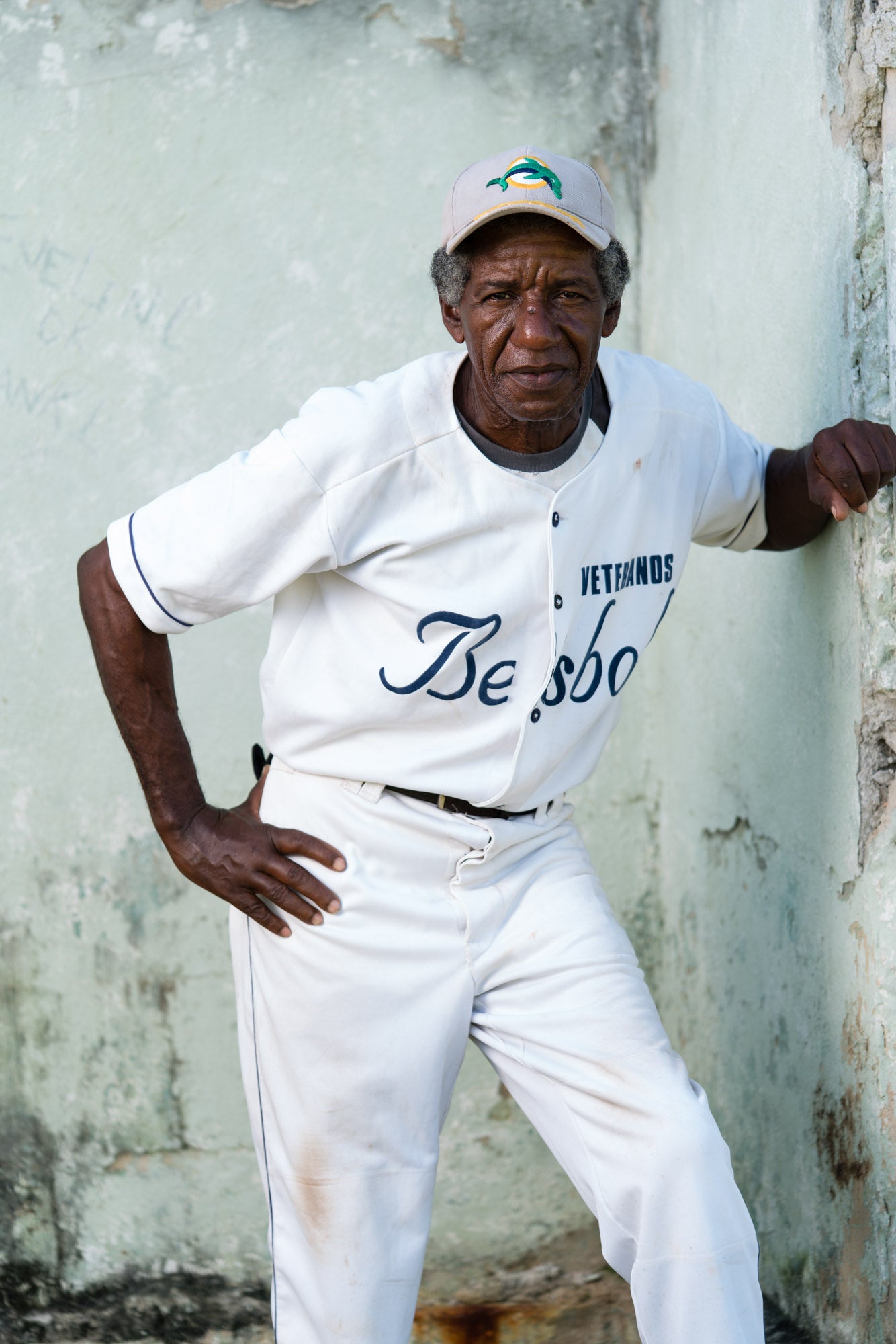
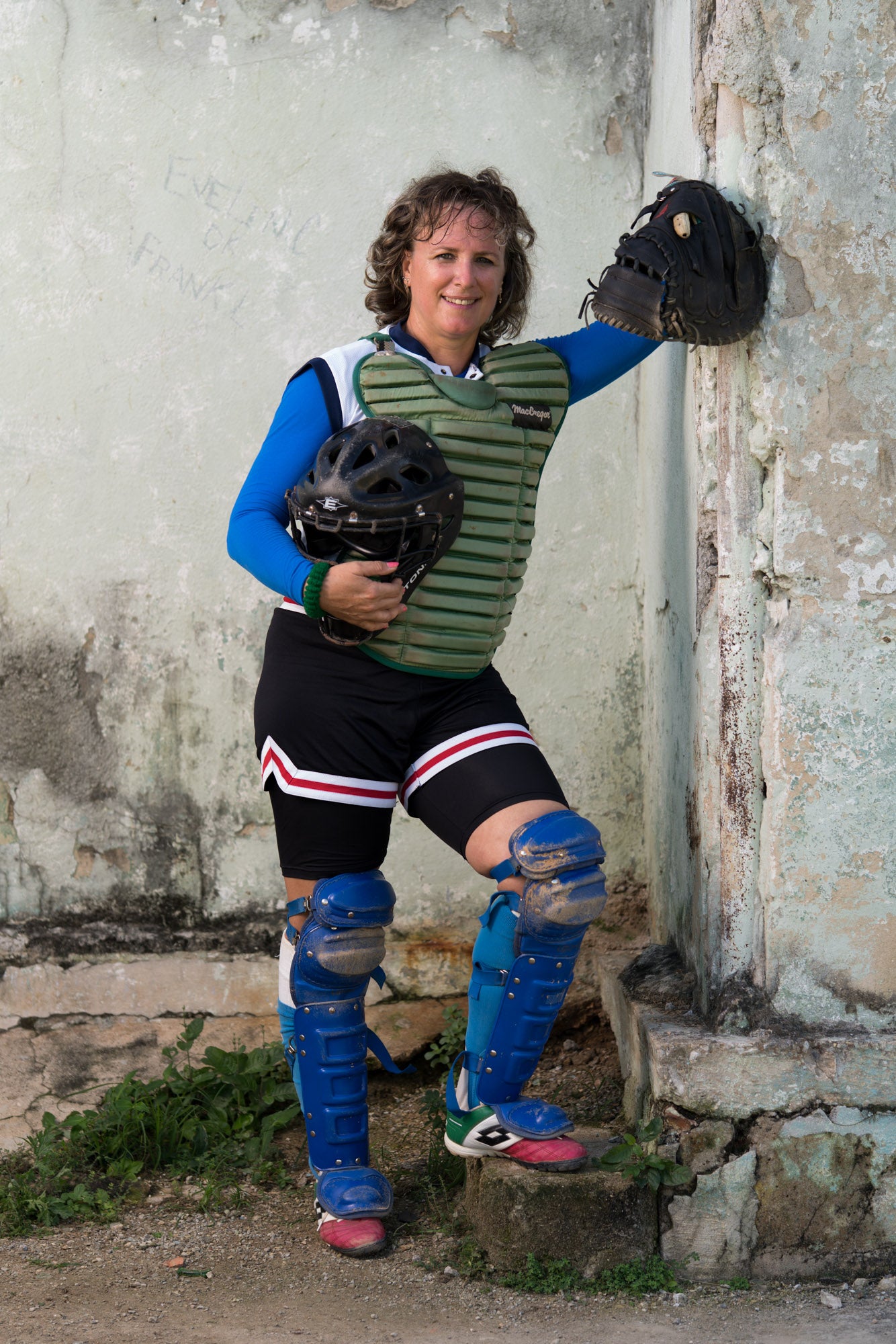
Alpha Universe: Were these hot-shoe-mounted strobes?
Ira Block: No these were big suckers. A large diffused umbrella and an Elinchrom ELB 400 portable strobe. And I was traveling with this kind of equipment because, when I could, I was using strobe to do pictures of people, because I just like that look. I wanted to maintain that look. So I had that equipment with me, and my assistant and I—I have an assistant down there who helps me—we found this location and in between innings we would just grab different people and photograph them.
I was using the Sony 90mm f/2.8 macro lens, which is really incredibly sharp. A fantastic lens. And I just felt, well, between the strobe and this lens and the faces and the colors, this would make a really vibrant interesting series of images.
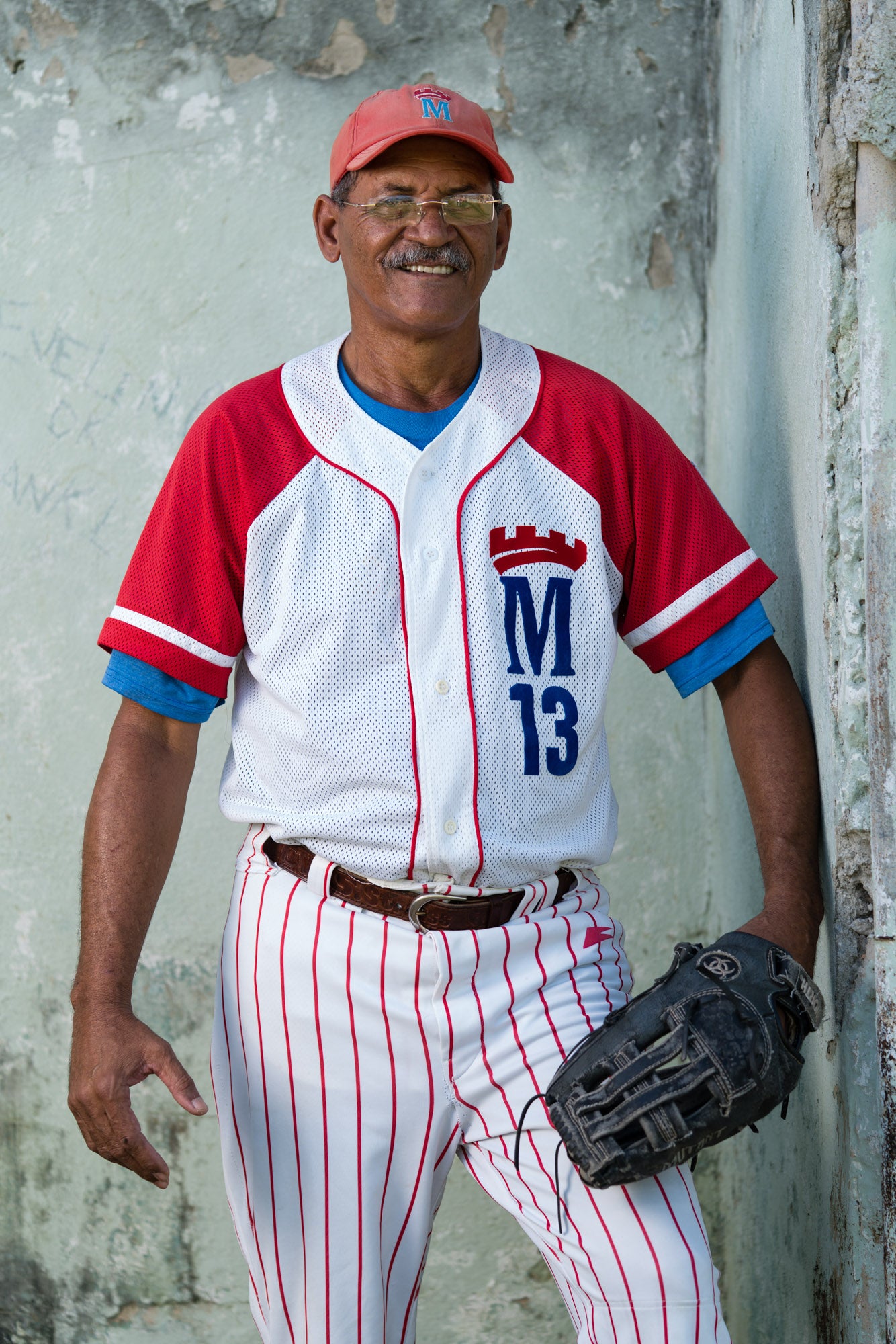
Alpha Universe: Tell me more about the benefits of adding strobe to a natural light portrait.
Ira Block: I don’t know technically why it is, but I think it’s because it’s a sharper light source, even in bright sunlight. The sun gives a high quality to color, the problem with the sun is you can’t control the angle, whereas the strobe you’re controlling the angle of where the light is hitting the subject and the specular highlight and the reflectance, the angle of reflectance, and the richness of the color, and depending on what kind of diffusion or modifier you’re using, you add to it. These portraits are not super tight, they’re half-body portraits because I wanted the uniform in there, but when you do it with strobe and you’re in even tighter, it’s the catchlight in the eyes that strobes control. It draws you into that person.
Alpha Universe: You’re using a lens that has the macro moniker to it. Like a lot of photographers, you see it being useful for more than macro photography. Have you always used macro lenses for portraiture?
Ira Block: It wasn’t that it was a macro, it’s that it’s really sharp. It’s got a really good contrast to it for color that I like, and it was the right focal length. I could’ve used my 70-200mm at about that focal length, but that’s a big lens, I’m handholding, I’m trying to work quickly and the 70-200mm is just a bigger lens to use. And at that point the new 85mm f/1.4 G Master wasn’t out yet. I may have used that one, had I had it, because that’s another spectacular lens. And the other thing is, I was trying to work pretty wide open because I wanted the background out of focus a bit.
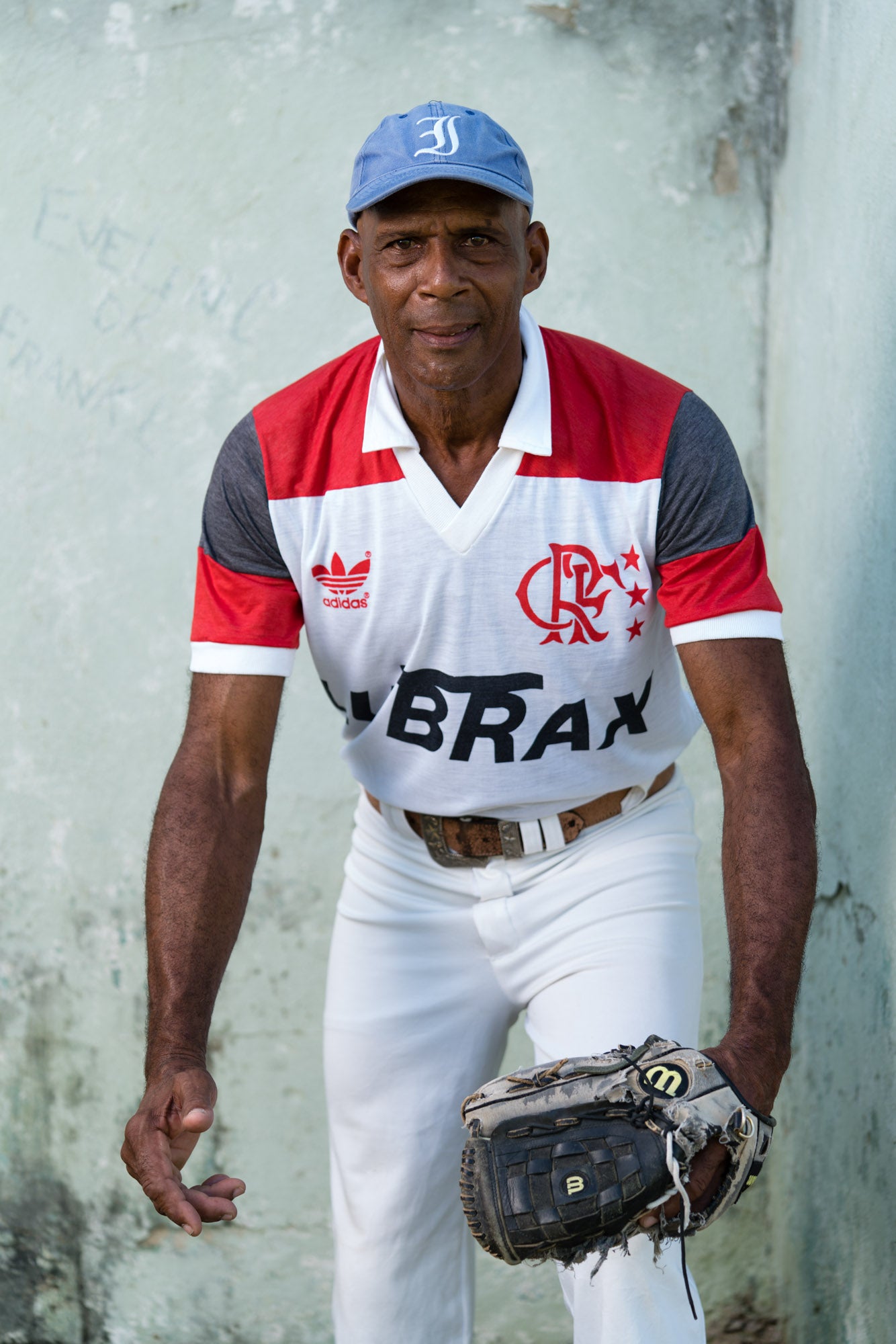
Alpha Universe: Was that a challenge combining daylight with a wide-open aperture and strobe?
Ira Block: Well I was working in the shade, and that gave me the ability to shoot at about 1/200th of a second at f/2.8 or f/4, somewhere in there, and I could lower my ISO because I had a very powerful strobe. I was using the Sony α7R II. It will synch with those kinds of strobes at about 1/200th of a second. If you’re out and you’re trying to get the sky in the frame and you want that sky darker, then you really need high-speed sync. But for this, I just wanted a nice, soft light with my strobe kicking in a nice pop. I didn’t want to make it too ‘strobe’ looking.
Alpha Universe: There’s an art to that, subtly balancing strobe with natural light.
Ira Block: I didn’t want it looking like, ‘oh god, there’s a big strobe in here!’ I just wanted the clean look that you get with a strobe. It seemed like a good balance to me. I didn’t want the strobe to look too powerful; it would have taken the attention away from the players’ character and been more about the lighting. So I balanced the strobe and natural light—the strobe gives a bit of sparkle and saturates the color and skin tones. Some players had darker skin, so I could use the strobe to get a good reflectance, a specular highlight, with the strobe. I could feel that these subjects were much more engaged with me and the camera and sometimes a setup that looks professional, as opposed to just having a camera and saying hey, look here, sometimes having the setup and putting the person in the spotlight gives them a certain feeling of confidence and importance that comes across in the pictures.
Alpha Universe: Does that also create sort of psychological advantage? If the setup looks professional, they stand a little taller?
Ira Block: Sometimes people may feel intimidated, I guess, but I had developed some rapport with these people. They knew the project I was working on. Here’s the thing…they’re an older generation and I think some of them were in their heyday when they were younger as ballplayers. So for them this was ‘hey, wow, someone’s paying attention to me. Someone’s taking my picture for this big project, and I feel good about all this.’
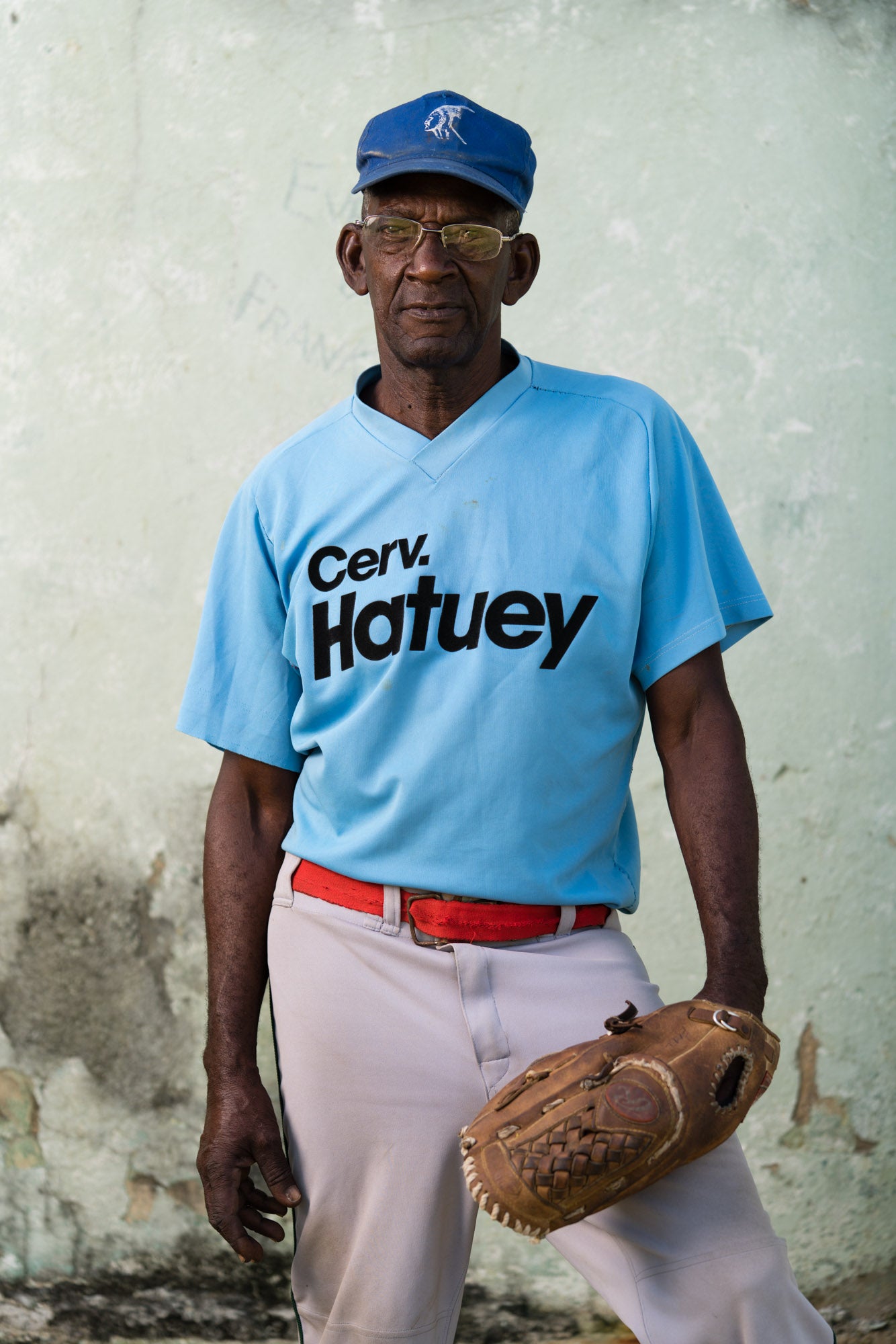
Alpha Universe: I’m curious about the composition. You generally prefer horizontal, but these are vertical. Why the change?
Ira Block: I’ve always been told, ‘we need verticals! Shoot verticals for the cover!’ I’m just shooting the way I see. People see horizontally, and somehow in a horizontal format, there’s more I could do with composition. Vertical format seems to limit me. I don’t know why; it could just be me and the way I think and see. But with this, I figured ‘okay, I’m going to shoot verticals.’ Most of the time when I do very tight headshots of people, I do those horizontally and I tend to cut off the top of people’s heads. Everybody says ‘why do you cut off the top of their heads!?’ When you cut off the top of the head you’re more drawn in to people’s eyes in a horizontal picture. And I also explain that when you go to the movie theater and they’re shooting 16x9 or a wider format than that and they do a tight headshot, you’ve got maybe a third or less of the screen is the person’s head.
The background is usually out of focus and that’s where cinematographers get into the bokeh of lenses. It’s critical for them, what shape the out of focus background will be. I’ve become very aware of background and background light. The more you advance in photography the more the nuances mean to you. In this case, the vertical was important because I was shooting from the waist up on most of the pictures, or chest up. These guys had a mixture of different uniforms that I liked.
Alpha Universe: How do you know when a project like this is finished? It seems you could go on shooting indefinitely.
Ira Block: Now Cuba’s started opening up, baseball’s changing now. I was down there when Major League Baseball was down there in December. It seemed like it was time I’d better jump on this and get it finished. And also financially, budget-wise, I had budgeted all the time and money a certain way, and so I knew that the December trip was my last trip. I did start feeling a little melancholy thinking ‘this is it.’ I felt good about my last pictures. My last subject was kind of a bookend. I started photographing a lot of young kids and worked my way up and here I’ve got these older gentlemen that have loved baseball their whole life, and I got to finish with them. Sad as I was, I felt like this was a nice way to end the project for me on the shooting side. Now is it permanently ended? No. I’m done with the project but when I’m down there if I see some baseball, yeah, I’ll continue shooting.
In photography there’s a lot of synergy and a lot of happenstance of things that are involved in what you’re doing. And to me this was just another one of those things that worked out for me, worked out for the project and made it easier for me to draw a line and say okay, now I’m finished.
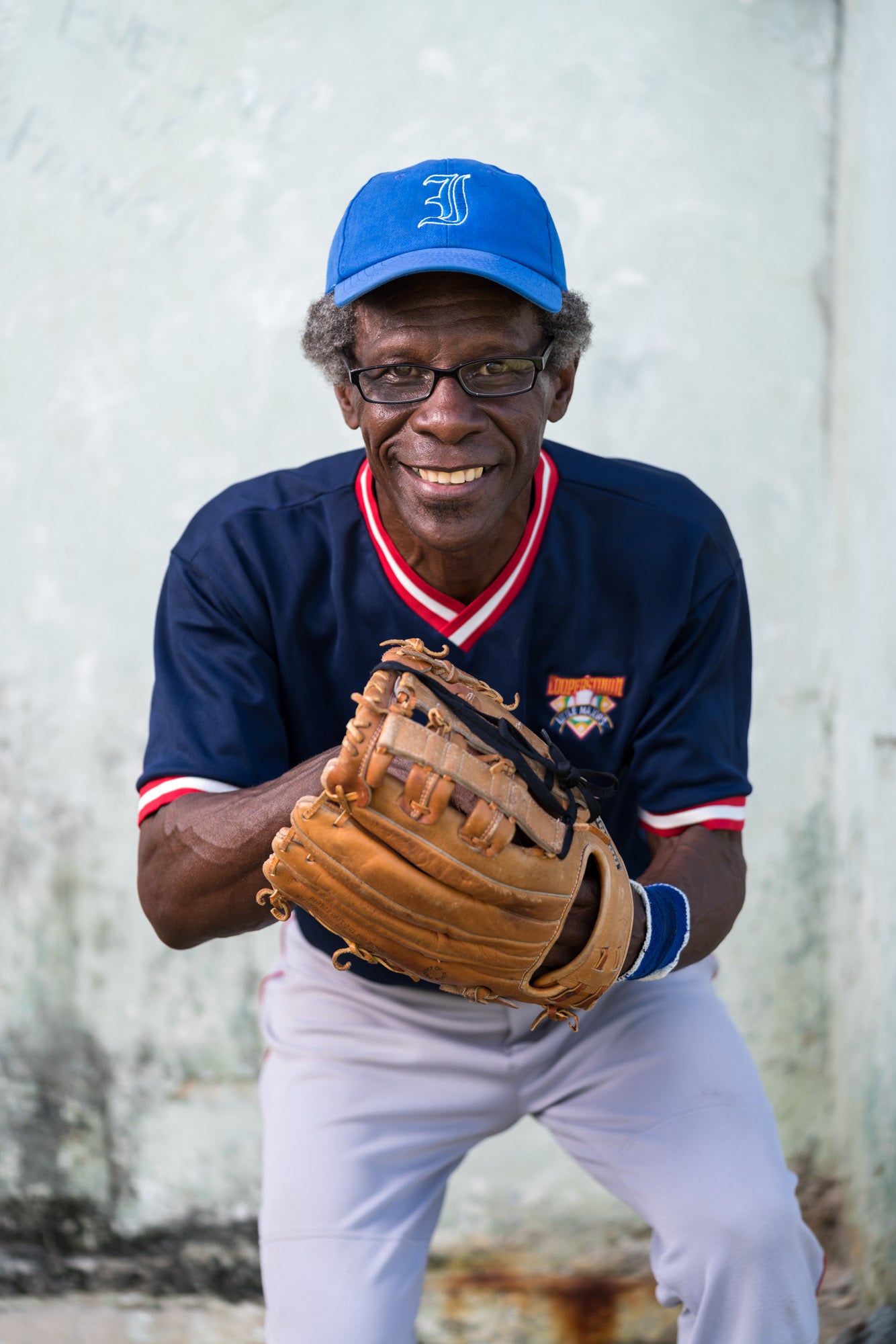
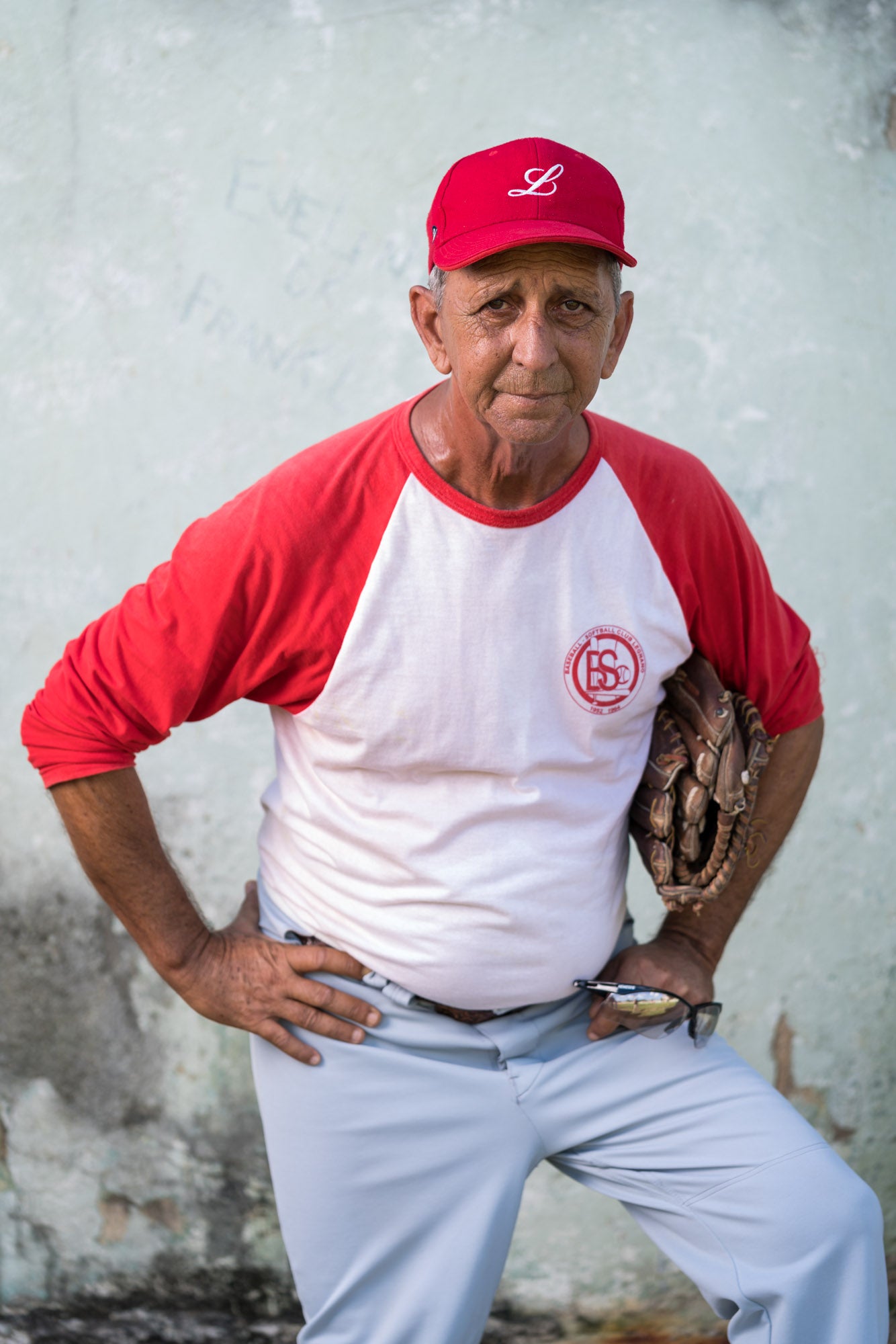
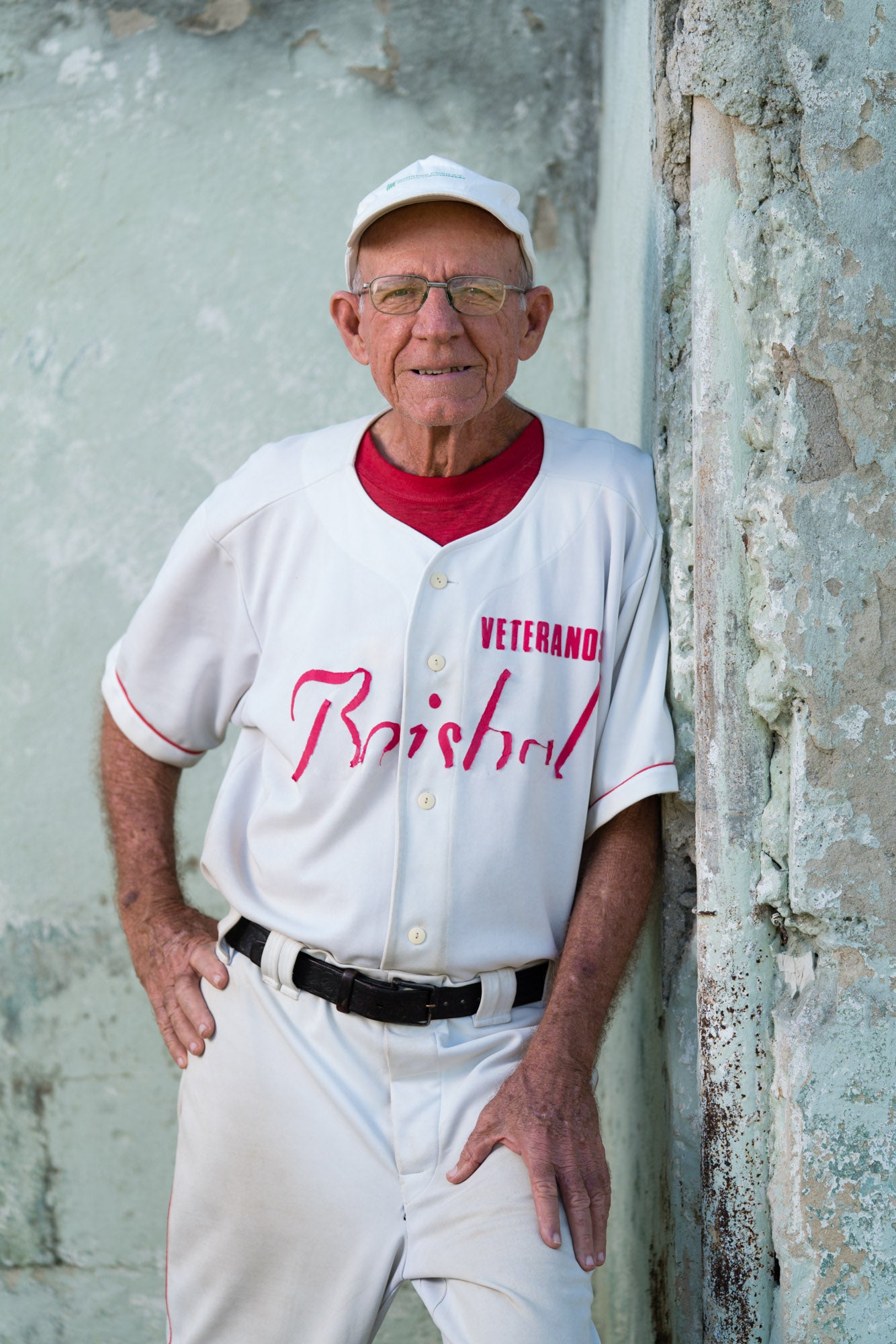
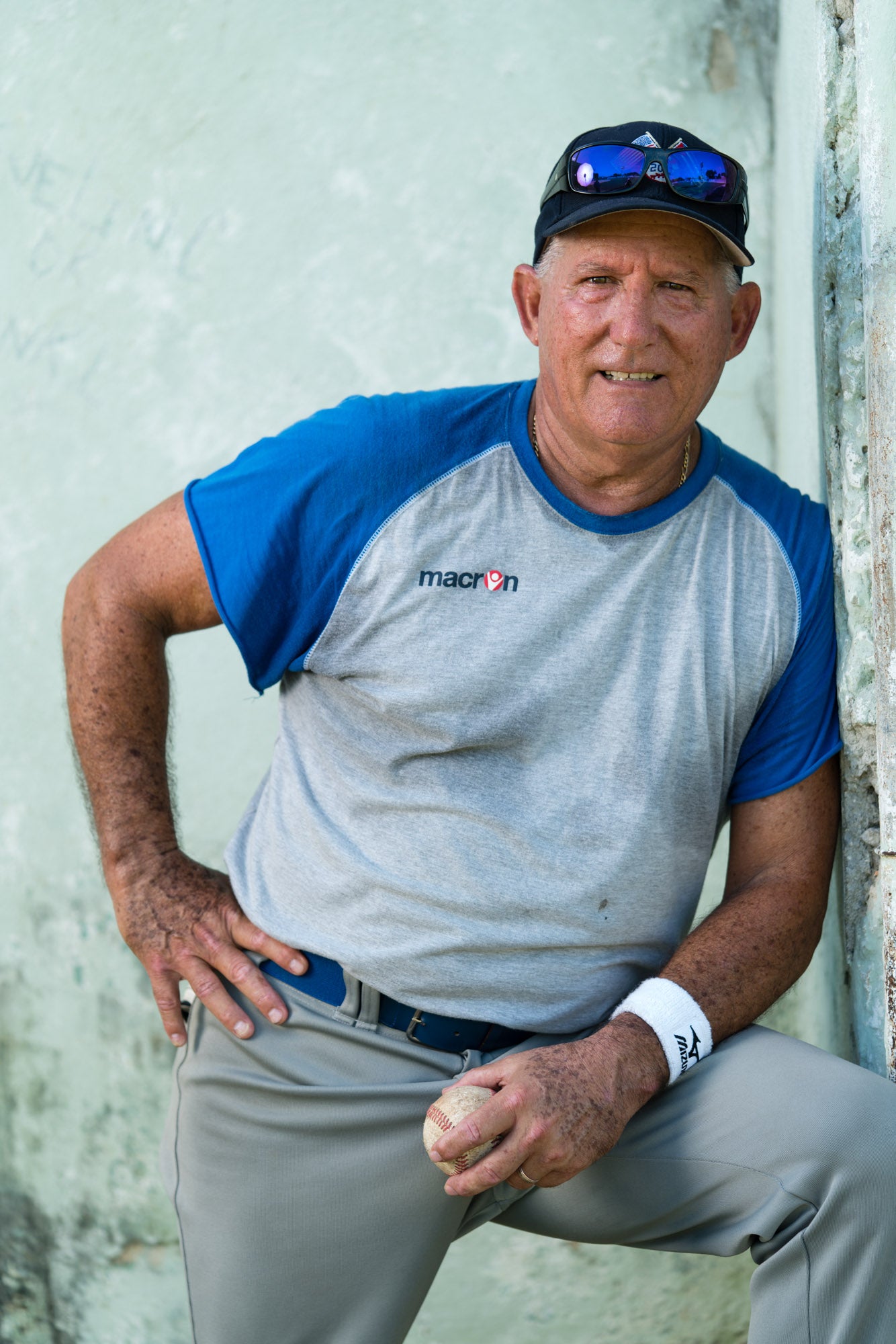
All photos by Ira Block. Sony α7R II, Sony FE 90mm f/2.8 Macro G OSS lens.



